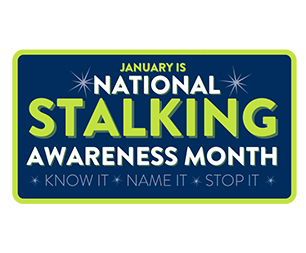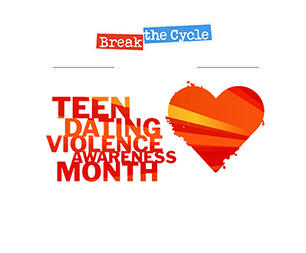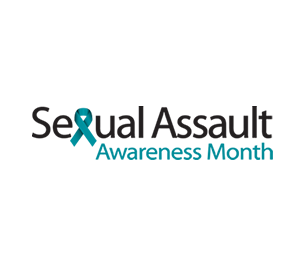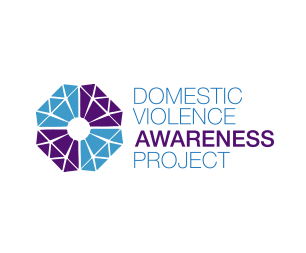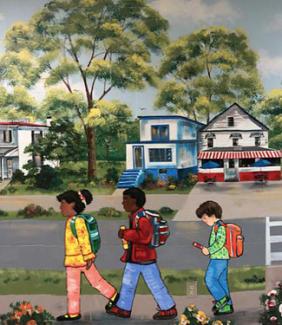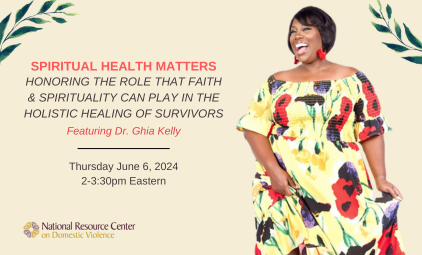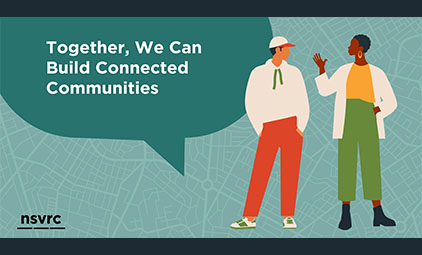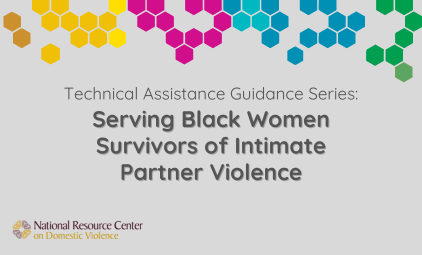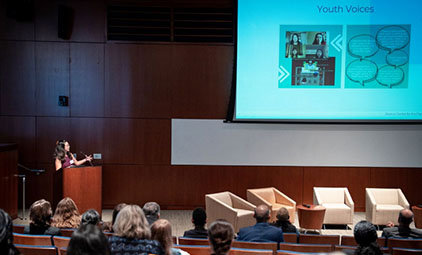By Casey Keene, NRCDV
I truly love my community. When I moved to my neighborhood 15 years ago, I felt the unique charm of our borough, situated along the city line. I could sense that the people who lived here were invested in their community and its public school, all volunteer fire department, church basement library, youth baseball association, and various parades and celebrations. What I didn’t know then was how the twin pandemics of COVID-19 and racial injustice would impact my neighborhood, and ultimately reveal its strength and resilience. What I didn’t realize was just how important our shared commitment to connectedness and mutual support really was.
When the pandemic emerged and our school closed its doors to in-person learning last March, my community lost an important and reliable source of connection for families in the neighborhood. What emerged in their place were alternative ways to connect and support each other – virtual meet-ups, sidewalk chalking events, new social media groups, informal mutual aid networks. What became clear was that our community would remain connected in the face of physical distancing because the people who live here value connection.
In the face of hardship and uncertainty, my community supported the Parent Teacher Organization (PTO) in creating a mural in the entryway of the school. Over the summer, we commissioned an artist to transform the walls of our school, capturing the spirit of our community in bright colors that reflected the diversity of our student body and the landmarks that make our neighborhood special. Students who returned for in-person instruction in the fall, excited yet apprehensive about adapting to new ways of sharing space with others, were greeted with this welcoming image as they walked through the doors, a visual reminder that they belong to a community that cares about them.
While we did not define this effort as “prevention” at the time, it most certainly strengthened community ties and promoted key protective factors that resulted in a sense of collective hope, belonging, and community pride that will impact school personnel, children and caregivers for years to come.
Leading with the heart
“Love is a community practice. Love emanates from the self—like a well, or spring—but to be in practice, love must show up in community. It is in community that we can see the true power of love in action.” – Shiree Teng and Sammy Nuñez
 The Brown Paper by Shiree Teng and Sammy Nuñez, Measuring Love in the Journey for Justice (July 2019), offers four expressions of emergent, transformative, catalytic love. In addition to love as a community practice, they name self-love, love of others, and love fused with power. They describe love as the antidote to injustice – love that is not a noun, but a verb. What does it look like when we practice love in community?
The Brown Paper by Shiree Teng and Sammy Nuñez, Measuring Love in the Journey for Justice (July 2019), offers four expressions of emergent, transformative, catalytic love. In addition to love as a community practice, they name self-love, love of others, and love fused with power. They describe love as the antidote to injustice – love that is not a noun, but a verb. What does it look like when we practice love in community?
When we lead with love in our community, we foster connection, mutuality, interdependence, wholeness, and abundance. When we lead with love, we build beloved communities. The practice of building beloved community centers community connectedness (defined below) and caring for the whole.
Inherent to building beloved community is rejecting and dismantling the white supremacy culture with which Americans have been indoctrinated. These cultural values of individualism, competition, and disconnection are embedded in our institutions and systems, and our everyday practices with one another. White supremacy culture promotes the hoarding of resources we witnessed as the COVID-19 pandemic unfolded. It flourishes on objectivity, or disconnection from emotion, spirit, and humanity. Leading with love requires us to embrace a new cultural framework in order to realize Dr. King’s vision for racial equity and anti-capitalism in which all people can share in the wealth of the earth.
Community connectedness
Community connectedness refers to the nature and quality of engagement among its members, including individuals, families, groups, organizations, and institutions. In connected communities, members gain a sense of belonging, purpose, and mattering from the experience of both deriving value from and adding value to their community. As a result, community connectedness is a protective factor that enhances wellbeing, fosters resilience, and promotes prevention.
Community connectedness is a social determinant of health and specifically a protective factor against gender-based violence. In a Technical Assistance Question of the Month, author Mikaela Gerwin explores how investing in building strong, healthy communities benefits survivors of domestic violence, offering her personal realization that “the bonds created in my own home could be mobilized within the broader context of my neighborhood and community.” She explores and appreciates the reciprocal impact that comes from community connectedness, sharing, “My community impacted me, and I impacted my community.”
Individuals have the capacity to foster connection and hope in their communities, and have demonstrated this in countless ways throughout the COVID-19 pandemic. According to Transforming Communities, a beloved community approach offers a pathway for anti-violence organizations to center community connectedness in their broader prevention work. It focuses on building relationships in order to heal hurting people and broken communities. And, it fosters the hope needed to sustain our movement work.
“By promoting and supporting resilience and healing, we allow ourselves and others to stay connected, to hold on to hope and to refuel the flame within our social justice hearts.” – Patty Branco
Community care
“The concept of cooperating and pooling resources within a community is rooted in communities of color.” – Margo Dalal, Detroit Community Wealth Fund
In the context of systemic racism, Black communities and people of color have long known the value of community care, and the importance of such an investment in sustaining thriving communities. The history of mutual aid in this country began with Black-led mutual aid societies, and has been nurtured specifically by Black women to this day. This kind of collective support cultivates abundance in the face of hardship and oppression.
“Mutual aid is the extension of all the community organizing work women of color have always done to keep people’s families fed, to keep clothes on everyone’s back.” – Anh-Thu Nguyen, Democracy at Work Institute
Mutual aid networks are acts of solidarity, not charity, where those in need are active participants. They offer opportunities for collective empowerment and shared investment in the well-being of the community as a whole. They function outside of oppressive systems to center the needs of those most impacted by structural racism, ableism, and transphobia. In response to the twin pandemics, many of us have seen the transformative power of mutual aid networks in action, and are seeking ways to incorporate these principles and practices into our work.
“With mutual aid, we support each other to live well, without the need for someone to prove to yet another institution that they’re deserving of help.” – Trans Mutual Aid Manchester
The work of deepening our communities is about sharing both our hardships and assets with one another. It is about investing in time together so that we may know one another more fully. It is about bringing our skills, talents, and strengths to the table so that they may benefit the collective, and trusting in the skills, talents, and strengths of others. Community resilience emerges when its members share assets – whether financial/tangible, service oriented, informational, spiritual, or cultural – to ensure that each of its members has the opportunity to thrive.
In the video below, Dean Spade and Mia Mingus explore how practicing mutual aid builds the world we want to live in.
Moving forward together
“The way we get through this is together.” Thelma Young-Lutunatabua, Radical Reimagining
Our efforts to foster resilience in our communities take many shapes, but what connects them is an investment in togetherness. They value love and connection as pathways to justice and equity. They invest in collective care to support those with the greatest need. They draw on shared assets to promote the liberation of all.
It’s time to embrace a more expansive understanding of what “prevention” looks like. We must recognize those already engaged in promoting community connectedness and community care. Wendi Seibold from Strategic Prevention Solutions challenges advocates to consider, in the face of this pandemic, the opportunity to “step back and reframe the inclusivity of your prevention programming” and lift up “what communities have known for quite some time works to keep their people safe, fed, housed, and well.” These strategies are critical to promoting community resilience and ultimately preventing gender-based violence.
 It’s time to lead with love, humility, and willingness to learn from those whose deep investment in their community is already making an impact. Explore ways your organization can support and partner with mutual aid networks in your community as part of your work. Individuals, families, and communities can heal and thrive when we support each other and cultivate abundance together.
It’s time to lead with love, humility, and willingness to learn from those whose deep investment in their community is already making an impact. Explore ways your organization can support and partner with mutual aid networks in your community as part of your work. Individuals, families, and communities can heal and thrive when we support each other and cultivate abundance together.
Related Resources:
NRCDV Webinar: Meeting this Moment: Meaningful Engagement for Social Change during Domestic Violence Awareness Month and Beyond (August 2020)
VAWnet Blog: Redefining WE: Building Beloved Communities (April 2020)
PreventConnect Podcast: Violence Prevention and Mask Making: Community Connectedness While Physically Distant (August 2020)










